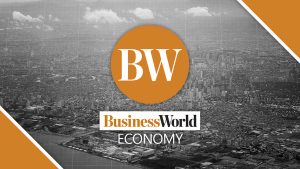By Karis Kasarinlan Paolo D. Mendoza
APPROVED building permits rose by 12.8% in April, a reversal from a 12.2% drop a year ago, the Philippine Statistics Authority (PSA) said in a report on Wednesday.
Preliminary data showed that building projects covered by the permits totaled 13,332 in April from 11,822 a year ago.
April’s year-on-year growth was also a turnaround from the revised 14.2% contraction in March.
Building projects in April covered 3.35 million square meters (sq.m.) of floor area, up by 35.5% year on year.
Construction projects represented by the permits were valued at P39 billion, up 30.8% from P29.82 billion a year ago.
The double-digit year on year growth rate in building permits is partly due to lower base effects amid the continued growth in the country’s economy as reflected by the gross domestic product (GDP), as well as the recovery of many industries with the lifting of Covid-related restrictions in July 2023, Michael L. Ricafort, chief economist at Rizal Commercial Banking Corp., said in an e-mail.
“The economy continued to recover and continued to benefit the [real estate and property] industry, especially in high-growth areas around the country as manifested by the boom in [real estate and property] prices in recent [months],” he added.
The country’s economy grew by 5.7% in the first three months of the year.
Permits for residential projects, which accounted for 65.7% of the total, rose 9.6% to 8,764.
These projects were valued at P17.09 billion, against the P12.95 billion recorded a year earlier.
Single homes made up 82.2% of the residential category with approved permits inching down by 0.2% to 7,202.
Applications for apartment buildings grew by 111.1% to 1,421 while applications for duplex or quadruplex homes were up by 36.8% and totaled 130.
Nonresidential projects likewise grew 18.3% year on year with 3,057 permits accounting for 22.9% of the total.
Nonresidential permits were valued at P17.54 billion, jumping 27.2% from P13.79 billion in April last year.
Approved commercial construction applications made up 70.8% of nonresidential projects, up 17% to 2,165.
Institutional and industrial permits rose 34.9% and 23.4% to 468 and 243, respectively.
Alteration and repair permits amounted to 927, up 16.6% annually and valued at P3.21 billion.
Permits for addition — construction that increases the height or area of an existing building — jumped 31.2% to 584.
Calabarzon (Cavite, Laguna, Batangas, Rizal, and Quezon) had the most approved construction projects, making up 25% of the total with 3,339 permits, followed by Central Luzon (2,076 permits), and Central Visayas (1,558 permits).
Mr. Ricafort expects US and local interest rates to affect construction activities and building permits in the future.
“Going forward, any possible cut in [US] interest rates later in 2024 and in 2025 that could be matched locally, would eventually help spur greater demand for [loans] that could lead to more [construction] activities and the necessary permits,” he said.
The Fed kept its policy rate at 5.25-5.5% on June 12, pushing rate cuts to as far back as December, Reuters reported.
The PSA said that construction statistics are compiled from the copies of original application forms of approved building permits as well as from the demolition and fencing permits collected every month by the agency’s field personnel from the offices of local building officials nationwide.
